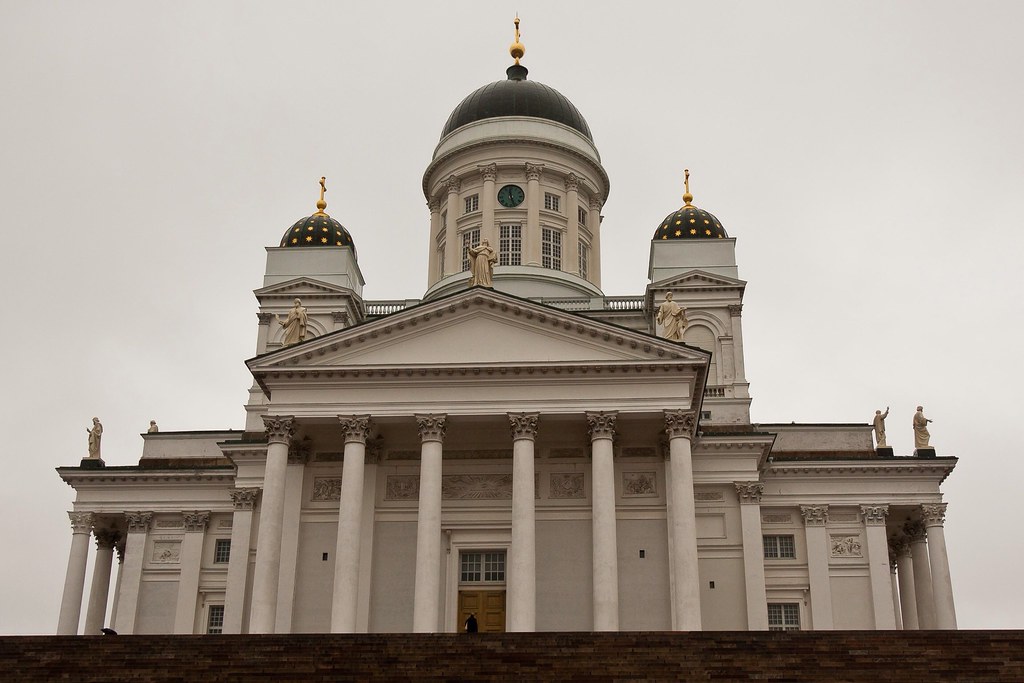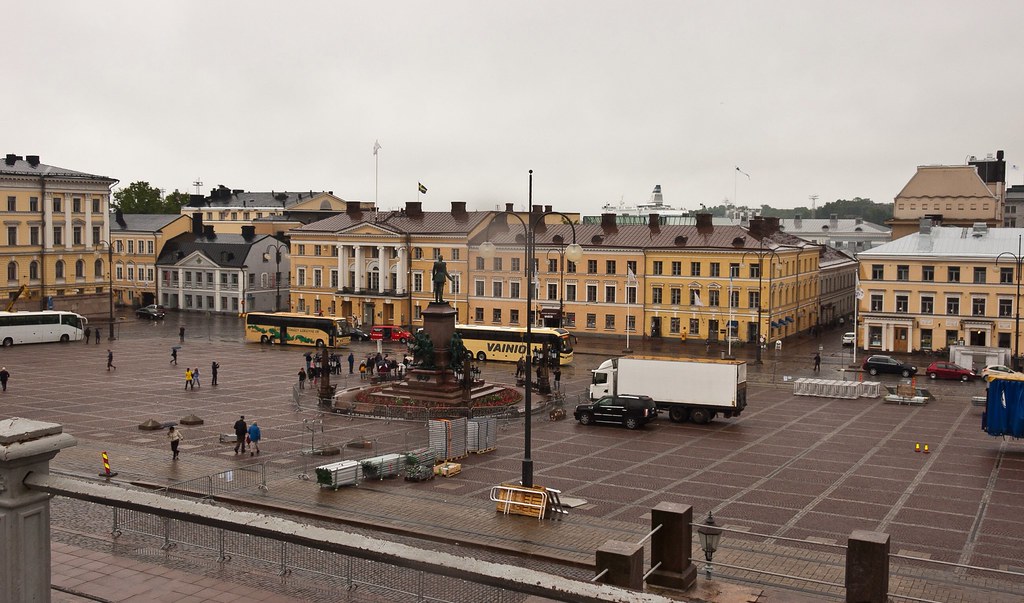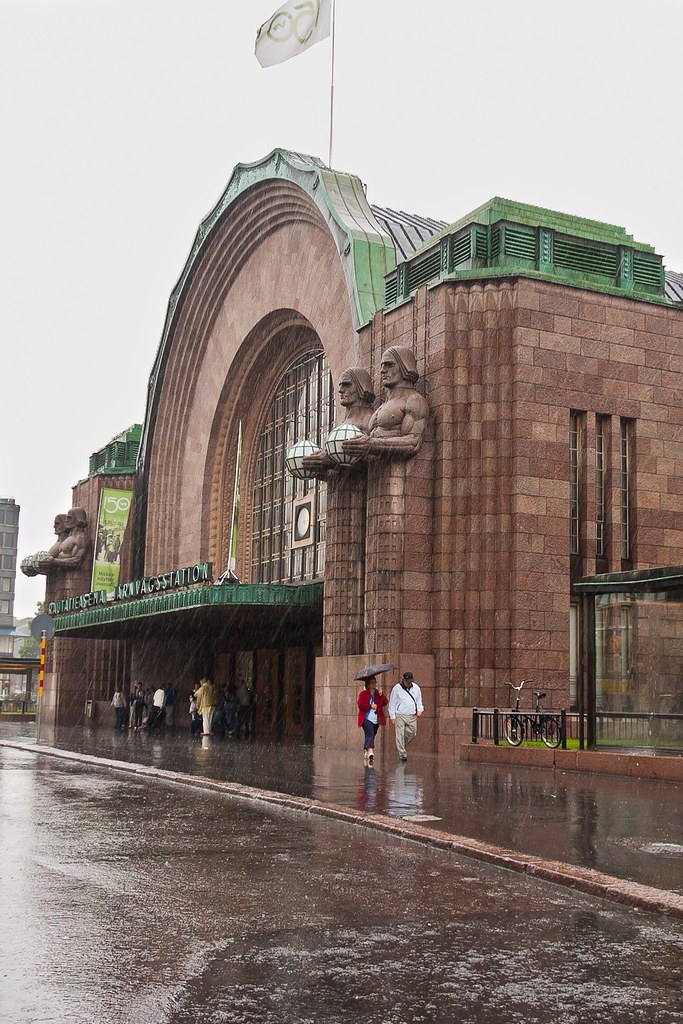
Above: The Helsinki Cathedral is probably the most prominent building and symbol of the city.
Finland is a Nordic country situated in Northern Europe and bordered by Sweden in the west, Norway in the north and Russia in the east, while Estonia lies to its south across the Gulf of Finland. With a population of only 5.4 million, Finland is the most sparsely populated country in the European Union. Helsinki is the country's capital and largest city with a population of about 600,000.

Above: The Senate Square.
Helsinki was established as a trading town by King Gustav I of Sweden in 1550 who intended it to be a rival to the Hanseatic city of Reval (today known as Tallinn). Little came of the plans as Helsinki remained a tiny town plagued by poverty, wars, and diseases (the plague of 1710 killed the greater part of the inhabitants).

Above: Inside of Helsinki's modern Music Centre.
It was not until Russia defeated Sweden in the Finnish War and annexed Finland as the autonomous Grand Duchy of Finland in 1809 that the town began to develop into a substantial city. During the war, Russians besieged the Sveaborg fortress and most of the city was devastated in a 1808 fire.

Above: The Central Railway Station Square.
Carl Ludvig Engel (1778–1840) was appointed to design a new city centre all on his own. He designed several neoclassical buildings in Helsinki. The focal point of Engel's city plan is the Senate Square. It is surrounded by the Government Palace, the University and the enormous Cathedral, which was finished in 1852, twelve years after Engel's death.
 Above: The statue in the centre of Senate Square with the Cathedral behind.
Above: The statue in the centre of Senate Square with the Cathedral behind.Helsinki is, however, perhaps even more famous for its numerous Art Nouveau influenced buildings of the romantic nationalism, designed in the early 1900s. The master of the Finnish Art Nouveau was Eliel Saarinen (1873–1950), whose architectural masterpiece was the Helsinki Central Railway Station.
 Above: Helsinki Central Railway Station.
Above: Helsinki Central Railway Station.Next time - it's Germany!

Good shots Peter,such a shame the same wet rain just a different country aye !!.Loved the modern music center,and a great shot of the Senate Square with the Cathedral in the background. Keep it up mate...Cheers Ted {:o)
ReplyDelete